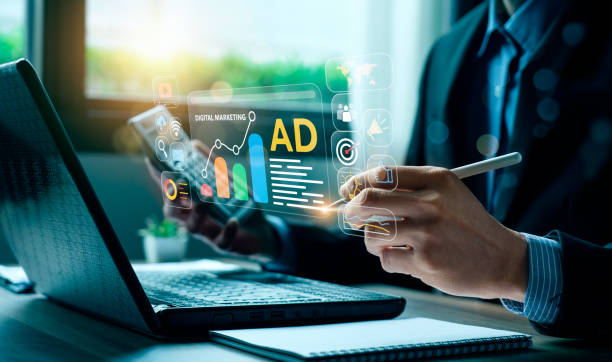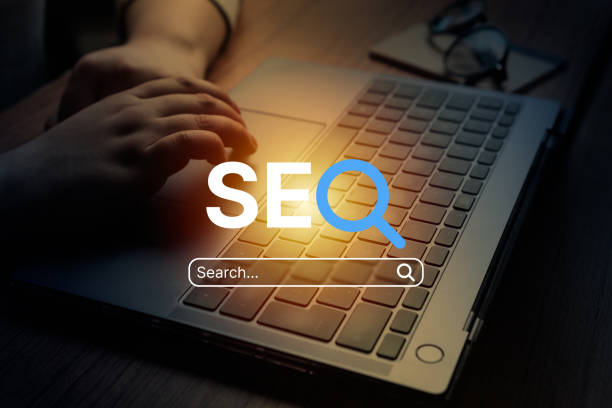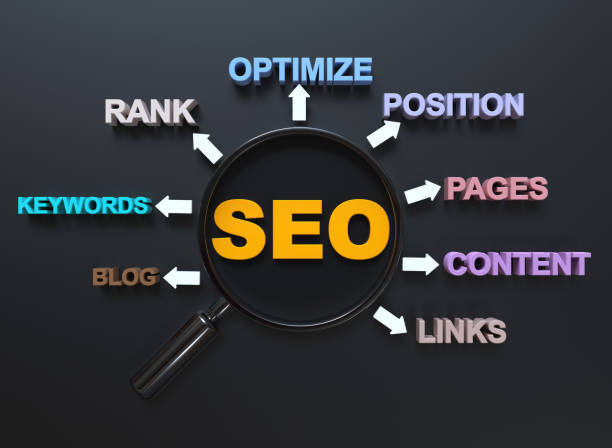What is Internal SEO and Why is it Essential for Online Success?

In today’s highly competitive world, visibility in search engines like Google is vitally important.
#Internal_SEO or On-Page Optimization, is a set of techniques and strategies applied directly to the content and structure of a web page to improve its ranking in search results.
Unlike off-page SEO, which deals with link building and activities outside the website, this process is performed entirely within your website.
If you want to know how to make your content friendly for search engines, internal SEO is your answer.
The main goal of internal SEO is to help search engines better understand the topic and content of your pages so they can display them to the right users.
This includes optimizing titles, meta descriptions, keywords, URL structure, image optimization, and many other things.
Without strong internal SEO, even the best content may never reach its audience.
This is an educational and fundamental part for anyone who wants to achieve success in the online space.
A deep understanding of internal SEO not only helps you achieve better rankings but also improves user experience, as your pages will be more organized and accessible.
This is the first step to mastering the art of being seen in organic search.
This specialized process requires attention to detail and a precise understanding of how Google’s algorithms work.
Is your current website converting visitors into customers or driving them away? Solve this problem forever with professional corporate website design by Rasaweb!
✅ Build strong credibility and branding
✅ Attract target customers and increase sales
⚡ Get free consultation now!
Key and Fundamental Components of Internal SEO

To achieve effective internal SEO, understanding its constituent components is of paramount importance.
This section elaborates on the introduction and explanation of these elements, which are at the heart of any optimization strategy.
One of the most important of these is keywords, which must be properly researched and embedded in the content.
#Keyword_Research is the foundation of any content optimization.
- Page Title (Title Tag): This is the first thing both users and search engines see.
It should be attractive, include the main keyword, and be less than 60 characters. - Meta Description: A short and persuasive summary of the page’s content that encourages users to click.
Although it does not directly affect ranking, it increases the click-through rate (CTR). - Headings (H1-H6): Used to organize content and improve readability.
H1 should contain the main keyword and be used only once per page. - URL Structure: Short, descriptive URLs that include keywords help search engines understand better.
- Image Optimization: Using appropriate Alt Text and compressing images is crucial for improving page load speed.
This is a specialized aspect often overlooked.
These components all work together to send strong signals to search engines and help them correctly understand your page’s topic.
This is a comprehensive guide to starting your website’s on-page optimization.
Content and Keyword Optimization for Internal SEO
![]()
Content is king, and this statement holds true more than ever in the world of internal SEO.
Content optimization means not only incorporating keywords but also producing high-quality, valuable content relevant to user needs.
#Quality_Content is the key to attracting and retaining audiences.
To begin, keyword research is the first step.
You need to find the words your target audience uses to find your information or products.
Tools like Google Keyword Planner, Ahrefs, and Semrush are very useful in this regard.
Once keywords are identified, you should use them naturally and logically within your content.
This includes using the main keyword in the H1 title, several times in the text, in subheadings (H2, H3), and in the first and last paragraphs.
Internal linking should also not be overlooked; it helps search engines better understand your website’s structure and transfer page authority between them.
Additionally, using synonyms and related phrases (LSI keywords) helps search engines fully understand the main topic of your page and prevents keyword stuffing.
This is a specialized and educational approach to improving internal SEO.
| Location | Description | Importance (1 to 5) |
|---|---|---|
| Title Tag | Includes the main keyword, at the beginning of the title | 5 |
| Meta Description | Includes the keyword, attractive to increase CTR | 3 |
| H1 Title | Includes the main keyword, only once per page | 5 |
| Subheadings (H2, H3) | Includes secondary and related keywords | 4 |
| First 100 words of content | Natural inclusion of the main keyword | 4 |
| Main content text | Natural and meaningful distribution of keywords and synonyms | 4 |
| Image file name and Alt Text | Includes keyword related to the image | 3 |
Technical Aspects of Internal SEO for Ranking Improvement

In addition to content, technical aspects of the website also play a very important role in internal SEO.
Ignoring these can render your content optimization efforts ineffective.
#Technical_Aspects include factors that directly impact crawlability and indexability by search engines.
One of the most important factors is page load speed.
Users and search engines hate slow pages.
Tools like Google PageSpeed Insights can help you identify problems and improve speed.
Optimizing images, compressing code (HTML, CSS, JavaScript), and using content delivery networks (CDNs) are ways to increase speed.
Website responsiveness or mobile compatibility is also vital.
Given the increasing use of mobile for searching, Google prioritizes mobile-friendly websites.
Clean and readable URL structures that include keywords also help search engines understand better.
Using an SSL certificate (HTTPS) for website security is also a ranking factor and builds user trust.
The robots.txt file and XML sitemap are also important technical tools.
robots.txt tells search engines which sections not to crawl, while an XML sitemap helps them discover all important pages of your website.
These are specialized and explanatory parts of internal SEO that should not be overlooked.
Did you know that poor online store design can drive away up to 70% of your potential customers? Rasaweb transforms your sales with professional and user-friendly e-commerce website designs.
✅ Significant increase in sales and revenue
✅ Full optimization for search engines and mobile devices
⚡ [Get free consultation from Rasaweb now]
The Importance of User Experience (UX) in Internal SEO

User experience, or UX, is an important factor that increasingly influences internal SEO.
Google constantly updates its algorithms to reward websites that provide the best experience for users.
#User_Experience not only affects your visitors’ satisfaction but is also directly related to your ranking in search results.
Factors such as Bounce Rate, Dwell Time, and Click-Through Rate (CTR) all indicate the quality of the user experience.
A website with an attractive visual design, easy navigation, readable and structured content, and high loading speed encourages users to stay longer on your site and view more pages.
This, in turn, sends positive signals to Google.
To improve UX and consequently internal SEO, ensure your website is responsive and displays well on all devices.
Use readable fonts and sufficient white space.
Break your content into short paragraphs and use headings and lists to improve readability.
Call-to-action (CTA) buttons should be clear and visible.
This is an analytical and guidance approach that shows how UX directly impacts your internal SEO.
Monitoring and Measuring Internal SEO Performance

After implementing internal SEO strategies, the next step is monitoring and measuring their performance.
Without data, you cannot know which strategies have been effective and which need optimization.
#SEO_Monitoring is one of the vital steps in an optimization campaign.
Tools like Google Search Console and Google Analytics are essential for this purpose.
Google Search Console shows you how Google sees your website, the keywords users found you with, and potential crawling or indexing issues.
Google Analytics provides detailed information about user behavior on your website, such as the number of visitors, dwell time, bounce rate, and popular pages.
By regularly reviewing these reports, you can identify positive and negative trends.
For example, if the bounce rate on a specific page is high, it may indicate a need to improve the content or user experience of that page.
If your ranking for a particular keyword is decreasing, it might be time to update the relevant content or pay more attention to internal linking.
This is an analytical and educational process that helps you continuously improve your website’s internal SEO and ensure the effectiveness of your efforts.
This continuous optimization is the key to sustainable success in search results.
Advanced Strategies in Internal SEO

To go beyond the basics and achieve superiority in search results, implementing advanced internal SEO strategies is crucial.
This section helps you add more depth to your efforts and outperform your competitors.
#Advanced_Strategy goes beyond keyword optimization.
One such strategy is optimizing for voice search.
With the increasing use of voice assistants, your content needs to be optimized to answer conversational queries.
This means using long-tail keywords and direct, concise answers to common questions.
Rich and Comprehensive Content (Evergreen Content) is also very important.
Producing content that remains relevant and valuable can continuously attract organic traffic and reduce the need for frequent updates.
This type of content should provide specialized and explanatory information.
Using Schema Markup is also a powerful technique.
Schema helps search engines better understand your content and display it as Rich Snippets in search results, which can significantly increase your click-through rate.
This is an important step in advanced internal SEO.
Optimizing for Core Web Vitals is also an integral part of these strategies, as it directly impacts user experience and rankings.
This is a guide for SEO professionals.
| Strategy | Description | Key Benefit for Internal SEO |
|---|---|---|
| Voice Search | Optimization for conversational queries and long-tail keywords | Increased visibility in voice search results, attracting new traffic |
| Evergreen Content | Production of permanent and high-value content | Sustainable organic traffic, becoming a reference in the relevant field |
| Schema Markup | Adding structured data to HTML code | Displaying Rich Snippets in SERP, increasing CTR and better search engine understanding |
| Core Web Vitals Optimization | Focusing on LCP, FID, CLS to improve page experience | Improved ranking, reduced Bounce Rate, increased user satisfaction |
| Competitor Analysis and SERP Analysis | Analyzing competitor performance and benchmarking best practices | Discovering new opportunities, improving content and keyword strategies |
Common Mistakes in Internal SEO and How to Avoid Them

In the process of optimizing internal SEO, there are common mistakes that can render your efforts fruitless.
Understanding and avoiding these errors is an important part of the educational and progression process.
#Common_SEO_Mistakes often result from lack of awareness or haste in implementation.
One of the biggest mistakes is Keyword Stuffing.
Unnatural and excessive use of keywords not only harms the user experience but can also lead to penalties from Google.
Instead, use keywords naturally and in appropriate contexts, and also use synonyms.
Another mistake is ignoring title tags and meta descriptions.
These elements make the first impression on users and search engines and must be carefully optimized.
Failure to use internal linking is also a missed opportunity.
Internal links help distribute page authority and assist search engines in crawling your site.
Ignoring page load speed and lack of website responsiveness are also glaring errors.
In today’s world, slow or mobile-incompatible websites will have no chance of ranking high.
Furthermore, producing low-quality or copied content not only harms your SEO but also drives users away from your site.
This is a thought-provoking content that teaches you how to avoid common pitfalls in internal SEO and choose the right path.
Is your company’s website as professional and trustworthy as it should be? With specialized corporate website design by Rasaweb, create an online presence that reflects your credibility and attracts more customers.
✅ Build a powerful and professional image for your brand
✅ Convert visitors into real customers
⚡ Get free consultation now!
Future Trends in Internal SEO and How to Prepare for Them

The world of SEO is constantly changing, and internal SEO is no exception.
To maintain an edge and ensure long-term success, awareness of future trends and preparation for them is essential.
#Future_SEO_Trends revolve around artificial intelligence and user experience.
One of the most important trends is Artificial Intelligence and Machine Learning in search algorithms.
Algorithms like Google’s RankBrain and MUM are becoming increasingly sophisticated and improving their ability to understand user intent.
This means that the quality and comprehensiveness of content become more important than ever.
Content that fully answers user questions and provides deep, authoritative information will be rewarded.
Zero-Click Searches are also on the rise, where users find their answers directly in search results (such as Rich Snippets or Featured Snippets).
This emphasizes the importance of optimizing for Schema Markup and providing concise and accurate answers.
Optimizing for Page Experience, which includes Core Web Vitals, will also become a more important ranking factor.
Also, visual and video content will play a more prominent role.
Optimizing videos for search (e.g., by adding captions and transcripts) and using high-quality images will become more important.
This is a news and analytical perspective that helps you prepare your internal SEO strategies for the future.
| Strategy | Description | Key Benefit for Internal SEO |
|---|---|---|
| Voice Search | Optimizing for conversational queries and long-tail keywords | Increased visibility in voice search results, attracting new traffic |
| Evergreen Content | Producing permanent and high-value content | Sustainable organic traffic, becoming a reference in the relevant field |
| Schema Markup | Adding structured data to HTML code | Displaying Rich Snippets in SERP, increasing CTR and better search engine understanding |
| Core Web Vitals Optimization | Focusing on LCP, FID, CLS to improve page experience | Improved ranking, reduced Bounce Rate, increased user satisfaction |
| Competitor Analysis and SERP Analysis | Analyzing competitor performance and benchmarking best practices | Discovering new opportunities, improving content and keyword strategies |
The Importance of Thought-Provoking and Entertaining Content in Internal SEO

While many aspects of internal SEO are technical and analytical, the role of thought-provoking and entertaining content should not be underestimated.
This type of content can significantly impact user engagement metrics like dwell time and bounce rate, which in turn send positive signals to search engines.
#Engaging_Content is key to connecting with the audience.
Thought-provoking content prompts readers to think and encourages them to engage more with your content.
This can include asking rhetorical questions, presenting challenges, or opening up discussions that stimulate debate and exchange of ideas.
Such content not only increases engagement rates but can also lead to social sharing and natural link-building, all of which benefit your internal SEO.
On the other hand, entertaining content can include storytelling, using humor (if appropriate and aligned with the brand), puzzles, quizzes, or engaging infographics.
The goal is to engage the visitor in an unexpected way to provide a positive experience on your website.
This approach can lead to a reduction in bounce rate and an increase in dwell time.
Ultimately, combining specialized and educational content with thought-provoking and entertaining elements is a formula for success in internal SEO.
This ensures your website is not only an information reference but also an attractive and dynamic place for users.
Frequently Asked Questions
And other services of Rasa Web advertising agency in the field of advertising
Smart Advertising Campaign: Revolutionize online growth with the help of Google Ads management.
Smart Advertorial: A combination of creativity and technology for digital branding through intelligent data analysis.
Smart Advertorial: A creative platform to improve customer behavior analysis with precise audience targeting.
Smart Sales Automation: A combination of creativity and technology for user engagement through Google Ads management.
Smart Custom Software: Revolutionize digital branding with the help of attractive user interface design.
And more than hundreds of other services in the field of internet advertising, advertising consultation, and organizational solutions
Internet Advertising | Advertising Strategy | Advertorial
Resources
- Professional Internal SEO Training
- Increase Website Traffic with Internal SEO
- Complete Guide to Internal SEO and On-Page Optimization
- What is Internal SEO and Why is it Crucial for Your Website?
❓ To leap your business forward in the digital world and reach the pinnacle of success, Rasaweb Afarin Digital Marketing Agency, with expertise in e-commerce website design and comprehensive marketing strategies, is with you to experience a powerful and profitable presence.
📍 Tehran, Mirdamad Street, next to Bank Markazi, Kazeroon Jonoubi Alley, Ramin Alley, No. 6


